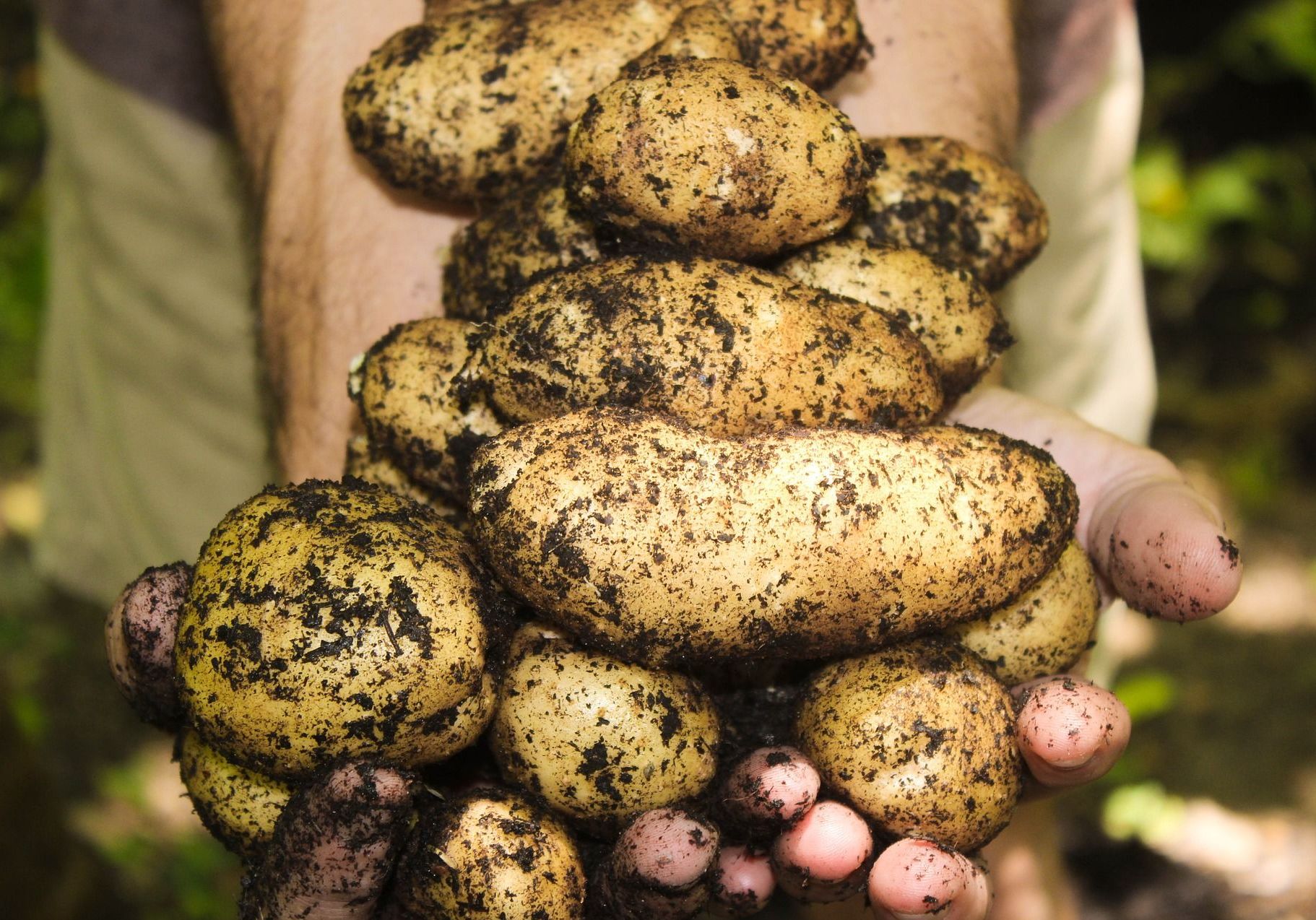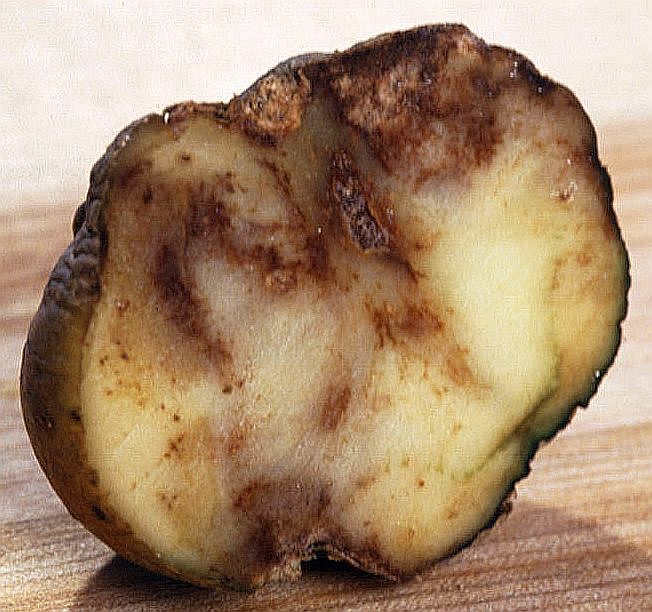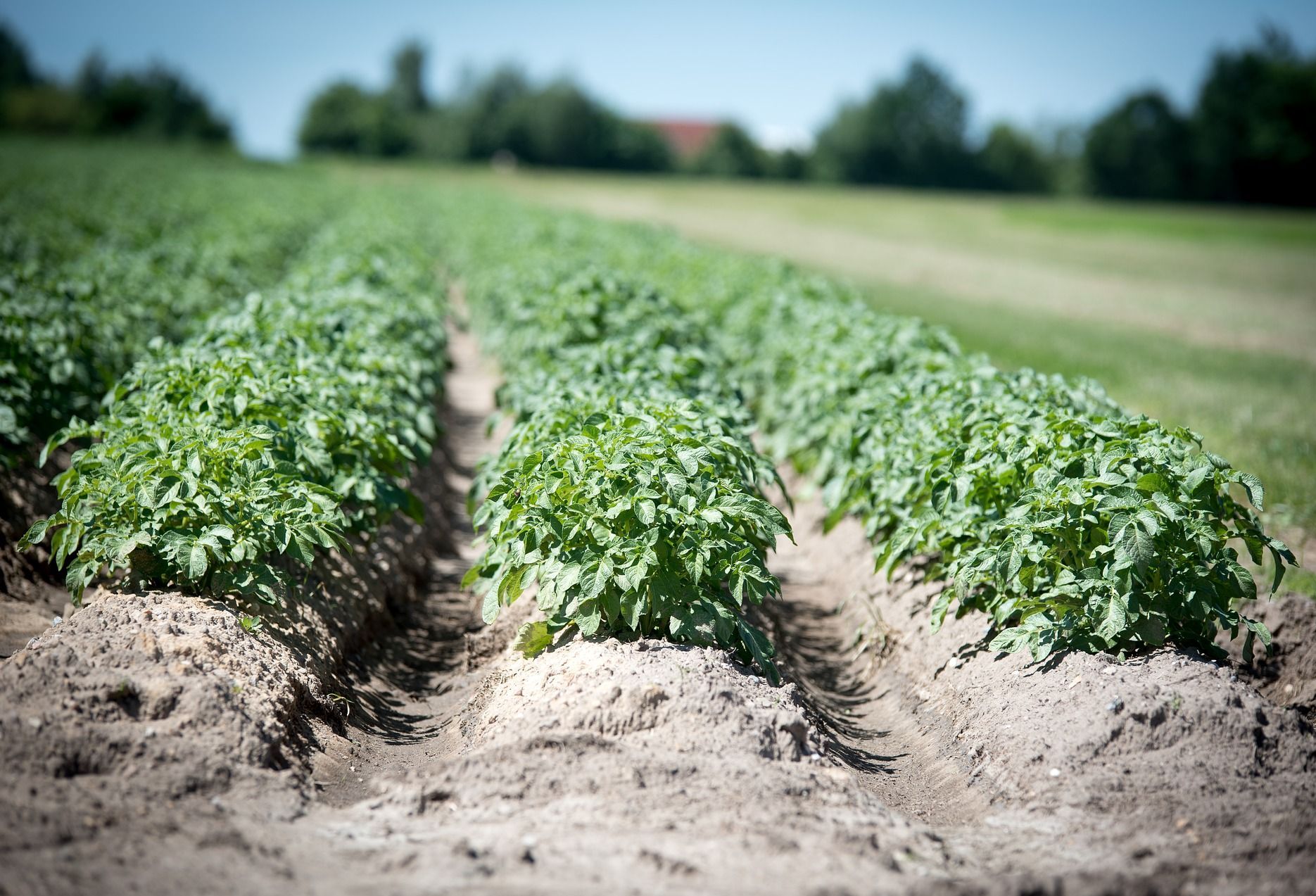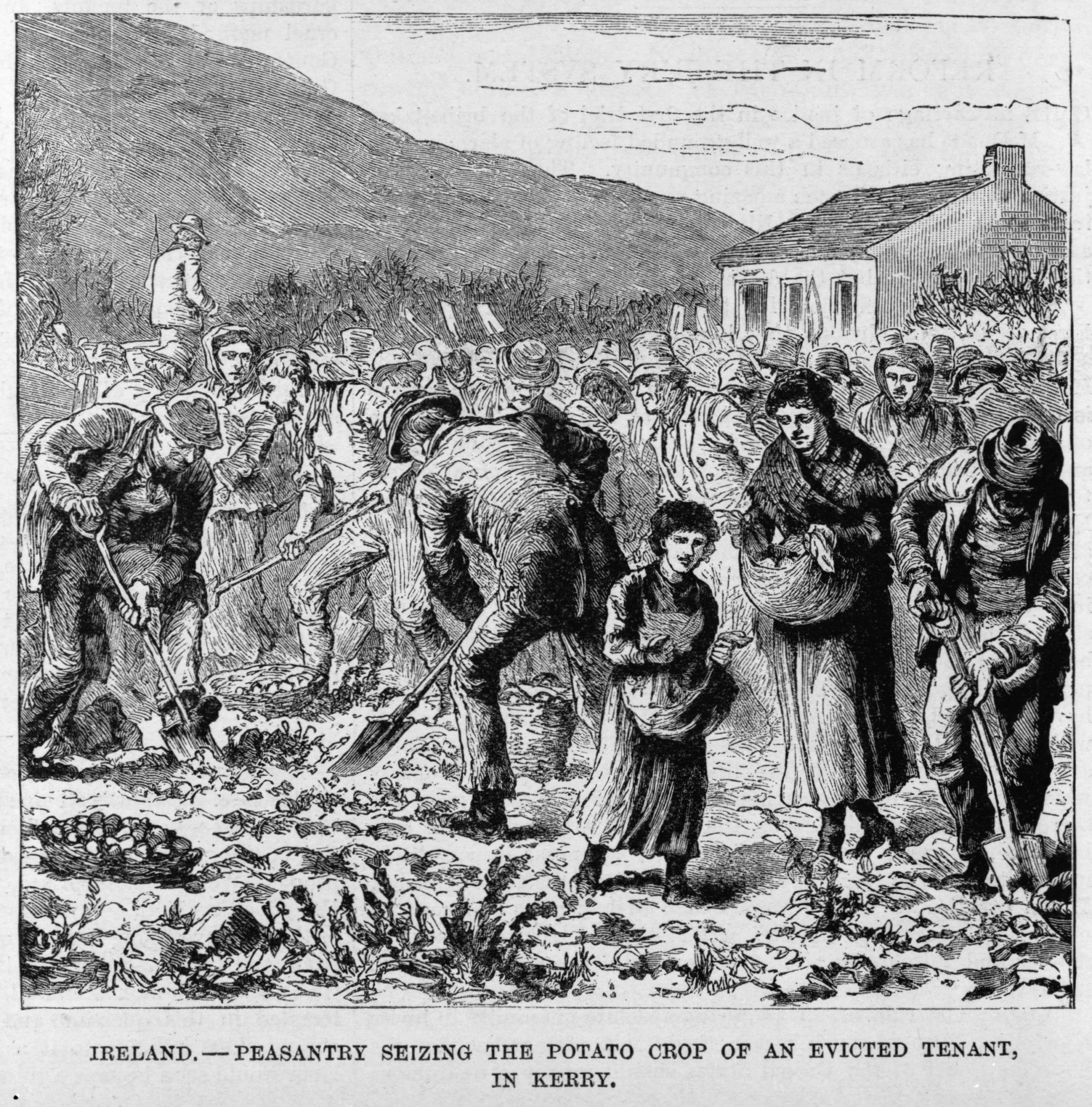
Irish Potato Famine: A Cause or Causes?
An occurrence attributed to one particular factor is all-too-often actually results from a number of significant factors. Event X did not have a cause, it had causes. What causative factors led to the great Irish potato famine?

A Fungus Among Us
It is true, the immediate cause of the Irish potato famine was a fungus, Latin name Phytophthora infestans.1 But this fungus descended upon the Irish potato crop suddenly. Surely there were factors involved that paved the way for this sudden attack. What were they?
What Paved the Way?
One element was the nature of the crop. Only one variety of potato was grown. We now know that this spells Trouble. Unfortunately it also spells Convenience. If a potato in one location was susceptible, they were all susceptible. And so, all of Ireland’s potato crop was susceptible when P. infestans struck.
A second element is weather. We are aware plants thrive in appropriate climates. For example, cacti usually thrive in hot and dry climates. Potatoes thrive in moist, cool climates.

The weather at the time of the blight, was quite warm, and unusually wet and humid. Perfect conditions for propagating P. infestans. One source indicates the blight began in Belgium at the end of June 1845, passing through other countries, arriving in Ireland in September. Spores landing on potato leaves quickly washed into the soil, attacking developing tubers.
Lastly, any potatoes appearing to have survived the blight were stored in bins that favored further attack by remaining spores. Those potatoes could not survive long enough to be consumed.

The Human Element
Ironically, during the potato famine, other food grew abundantly that could have been used to assist the starving. Instead, much was exported to England continuing to profit to the prosperous, who were, generally, Protestant. Thus neither religion nor government came to the rescue.
A New Spud
Scientists have developed a new blight-resistant potato, dubbed AWN86514-2, which they have made available to plant breeders. It is hoped this will result in commercially available potato varieties for farm use. Time will tell.
Please watch this video (less than 4 minutes in length) that is visually absorbing and highly educational, discussing the Potato Late Blight. It will demonstrate the kind of enemy the poor 19th century Irish were faced with…
In Conclusion
Let us acknowledge this fact: the very small should never be underestimated. Just as the flea of a rodent carried Black Death to Europe, and a mosquito brought Yellow Fever to Philadelphia in 1793, so a mere spore brought a million deaths and more to an Island nation.
As for myself, I live in part, because of the great 1840’s Irish potato famine.
1 It is now believed the strain of P. infestans responsible for the Irish potato famine, came from South America. It was probably brought to Ireland in ships intended as provisions for the crew. This strain has been dubbed HERB-1. [See NCSU reference, below.]
Note:You might also enjoy Black Knot Tree Fungus on Fruit Trees
References:
- History.com: Irish Potato Famine
- Smithsonianmag.com: Scientists Finally Pinpoint the Pathogen That Caused the Irish Potato Famine
- USDA Agricultural Research Service: Potato Offers Resistance to Late Blight Disease
- NCSU: Persistence of the Mitochondrial Lineage Responsible for the Irish Potato Famine in Extant New World Phytophthora infestans
- American Phytopathological Society: The Irish Potato Famine and the Birth of Plant Pathology

Definitely the very small should not be ignored. Viruses can wreak havoc, witness the current covid-19 pandemic!